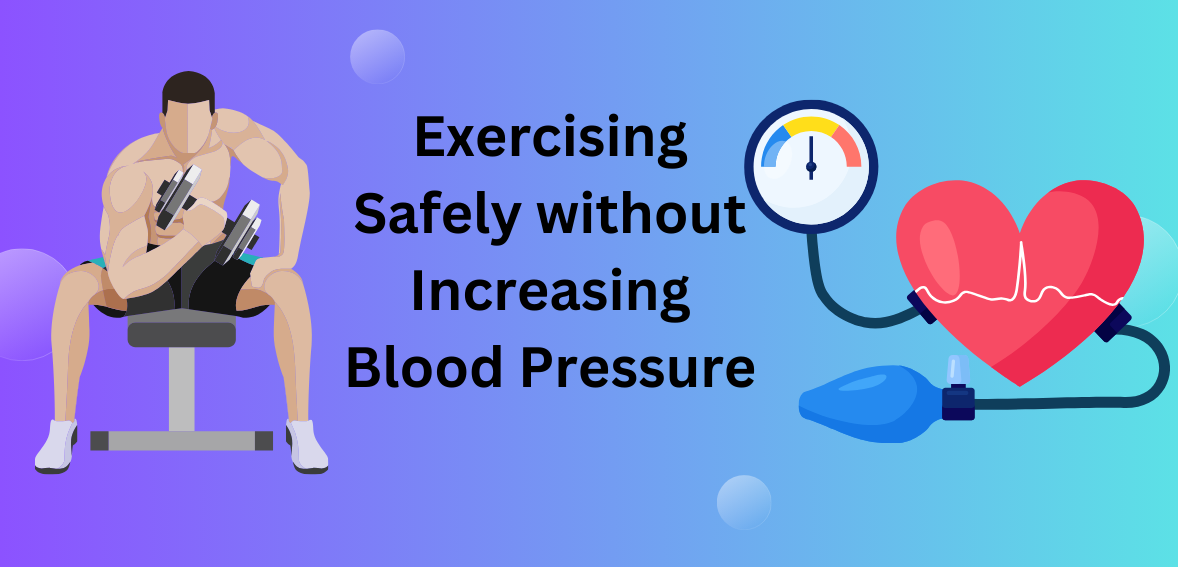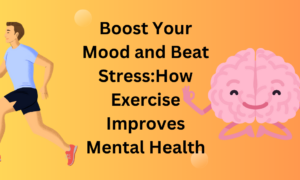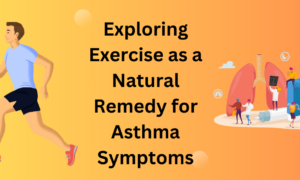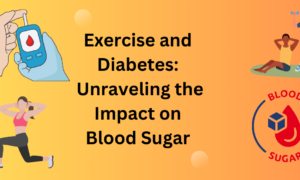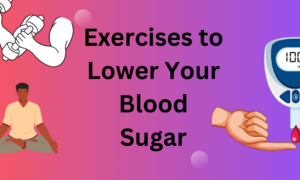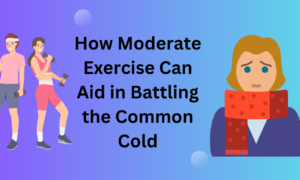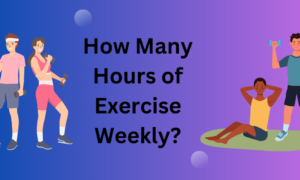Welcome to our blog post on the intriguing topic of whether exercise can raise blood pressure. Blood pressure, a crucial measure of our cardiovascular health, is something we should all strive to understand better. Many individuals are concerned about how different activities, specifically exercise, may impact their blood pressure levels. Well, fear not! We’re here to shed light on this matter and provide you with valuable insights.
So, grab your workout gear and get ready as we explore the effects of exercise on blood pressure. Whether you’re an avid fitness enthusiast or someone looking to improve their overall well-being, this article will equip you with the knowledge needed to make informed decisions about your health. Let’s dive in!
The Importance of Understanding Blood Pressure
Understanding blood pressure is crucial for maintaining optimal health and preventing potential health complications. Blood pressure refers to the force exerted by circulating blood against the walls of our arteries. It consists of two measurements: systolic pressure, which indicates the pressure during heartbeats, and diastolic pressure, which reflects the pressure between beats.
By understanding your blood pressure readings, you can identify whether they fall within normal ranges or if there is cause for concern. High blood pressure (hypertension) can lead to serious conditions such as heart disease, stroke, and kidney problems. On the other hand, low blood pressure (hypotension) may result in dizziness, fainting spells, and inadequate oxygen supply to vital organs.
Monitoring your blood pressure regularly allows you to detect any abnormalities early on and take appropriate measures for prevention or treatment. Lifestyle modifications like healthy eating habits, regular exercise, stress management techniques, and limiting alcohol consumption are all essential components of maintaining a healthy blood pressure range.
Remember that everyone’s ideal blood pressure varies based on factors such as age and overall health status. Nevertheless, knowing what constitutes a healthy range empowers you to make informed decisions about lifestyle choices. It also enables healthcare professionals to provide targeted recommendations when necessary.
Ultimately, the more we understand about our blood pressure, the better equipped we are to prioritize our health and well-being.
Exercise and its Effects on Blood Pressure
Exercise has long been hailed as a key component of a healthy lifestyle, but what impact does it have on blood pressure? The answer is not so straightforward. While exercise is generally beneficial for overall health and can help lower blood pressure in the long term, certain types of exercise can temporarily raise blood pressure during and immediately after the activity.
Aerobic exercises like running, swimming, or cycling are known to increase heart rate and breathing rate. This leads to an immediate rise in blood pressure as the body works harder to supply oxygen-rich blood to the muscles. However, regular aerobic exercise strengthens the heart over time, making it more efficient at pumping blood and ultimately lowering resting blood pressure.
Strength training exercises involving heavy weights or resistance bands also cause a temporary spike in blood pressure due to increased muscle contractions. This effect is especially pronounced when performing intense lifts or holding your breath while exerting force. It’s important for individuals with high blood pressure to approach strength training with caution and consult their healthcare provider for guidance.
High-intensity interval training (HIIT), which combines bursts of intense exercise with short recovery periods, can also lead to temporary increases in blood pressure during intense intervals. However, research suggests that HIIT may contribute to better long-term control of hypertension when performed regularly under supervision.
It’s worth noting that these temporary spikes in blood pressure during exercise are typically well-tolerated by healthy individuals without underlying cardiovascular conditions. They are often considered normal physiological responses that promote adaptation and improved fitness levels over time.
To manage your blood pressure during exercise sessions:
1. Warm up thoroughly before any physical activity.
2. Stay properly hydrated throughout your workout.
3. Avoid exercising outdoors during extreme temperatures.
4. Monitor your intensity level; don’t push yourself beyond your limits.
5. Incorporate cool-down stretches into your post-workout routine.
If you have existing high blood pressure or other cardiovascular conditions, it’s crucial to consult with your healthcare provider before starting or modifying an exercise routine. They can provide
Types of Exercises that Can Potentially Raise Blood Pressure
When it comes to maintaining a healthy lifestyle, exercise is often touted as one of the key components. However, not all exercises are created equal when it comes to their effects on blood pressure. While regular physical activity has been shown to lower blood pressure in most individuals, there are certain types of exercises that can potentially raise blood pressure.
One type of exercise that may cause a temporary increase in blood pressure is high-intensity interval training (HIIT). This form of exercise involves short bursts of intense activity followed by periods of rest or low-intensity exercise. The sudden and intense nature of HIIT workouts can lead to an increase in heart rate and blood pressure during active intervals.
Weightlifting is another type of exercise that has the potential to temporarily raise blood pressure. When lifting heavy weights, your muscles require increased oxygen and nutrients, which leads to an increased demand on your cardiovascular system. As a result, your heart rate and blood pressure may elevate during weightlifting sessions.
Additionally, exercises that involve straining or holding your breath for extended periods can also contribute to an elevation in blood pressure. Examples include powerlifting movements like squats or deadlifts where you hold your breath while performing the lift.
It’s important to note that these increases in blood pressure during specific exercises are typically temporary and return back to normal levels shortly after completing the workout session. Nonetheless, if you have pre-existing high blood pressure or other cardiovascular conditions, it’s crucially important to consult with your healthcare provider before engaging in any vigorous activities.
In conclusion, while some types of exercise may temporarily raise blood pressure due to their intensity or demands on the cardiovascular system, it’s essential not to overlook the overall benefits that regular physical activity provides. By incorporating a variety of aerobic, strength-training, and flexibility exercises into our routine, we can help maintain optimal blood pressure levels and promote overall cardiovascular health.
Tips for Managing Blood Pressure during Exercise
1. Start with a Warm-Up: Prior to diving into intense workouts, it’s crucial to warm up your body. This helps prepare your cardiovascular system and gradually increases your heart rate, minimizing the chances of sudden spikes in blood pressure.
2. Monitor Your Intensity: Pay close attention to how hard you’re pushing yourself during exercise. If you have high blood pressure or are at risk, it’s essential to avoid overexertion. Aim for moderate-intensity activities that get your heart pumping without pushing it too far.
3. Choose the Right Exercises: Certain types of exercises can potentially raise blood pressure more than others. Activities like weightlifting and heavy resistance training may cause temporary spikes in blood pressure levels. Consider incorporating low-impact exercises such as walking, swimming, or cycling into your routine instead.
4. Stay Hydrated: Drinking enough water before, during, and after exercise is important for maintaining optimal blood pressure levels. Proper hydration helps regulate circulation throughout the body and prevents dehydration-induced increases in blood pressure.
5. Listen to Your Body: It’s vital to listen to any warning signs from your body while exercising if you have high blood pressure or are at risk of developing it. If you experience symptoms such as dizziness, chest pain, shortness of breath, or severe fatigue during physical activity, consult a healthcare professional immediately.
6. Don’t Skip Rest Days: Giving your body adequate time to recover between workouts is essential for overall health and managing blood pressure effectively.
Remember that everyone’s situation is unique; therefore consulting with a healthcare professional is always recommended before starting an exercise program when dealing with high or borderline-high levels of hypertension.
The Link between Exercise and Long-Term Blood Pressure Control
Regular exercise has been proven to have numerous benefits for our overall health and well-being. When it comes to blood pressure, staying active can play a significant role in long-term control. Engaging in physical activity on a regular basis helps to strengthen the heart muscle, improve circulation, and reduce stress levels – all of which contribute to maintaining healthy blood pressure readings.
Cardiovascular exercises such as brisk walking, jogging, cycling or swimming are particularly effective in managing blood pressure. These activities increase the heart rate and promote better oxygen delivery throughout the body. Over time, this strengthens the cardiovascular system and allows it to work more efficiently.
Strength training exercises should also be incorporated into any exercise routine aimed at controlling blood pressure. Resistance training helps build lean muscle mass, which in turn increases metabolic rate and contributes to weight management – another important factor for maintaining optimal blood pressure levels.
It’s worth noting that consistency is key when it comes to reaping the long-term benefits of exercise on blood pressure control. It’s recommended that individuals aim for at least 150 minutes of moderate-intensity aerobic activity (such as brisk walking) per week or 75 minutes of vigorous-intensity aerobic activity (such as running).
Additionally, finding ways to incorporate physical activity into daily routines is essential for those with busy schedules. Taking short breaks throughout the day to stretch or go for a quick walk can make a difference over time.
As always, it’s crucial for individuals with high blood pressure or other underlying medical conditions related to their cardiovascular health consult with their healthcare provider before starting any new exercise regimen.
Incorporating regular physical activity into your lifestyle not only supports overall well-being but also plays an important role in long-term blood pressure control. So lace up those sneakers and get moving!
Myth-busting: Common Misconceptions about Exercise and Blood Pressure
There are several common misconceptions when it comes to exercise and its impact on blood pressure. Let’s dive into some of these myths and set the record straight.
One prevalent misconception is that exercise always raises blood pressure. While it is true that certain types of exercises can temporarily raise blood pressure during the activity, regular exercise actually has long-term benefits for managing blood pressure levels.
Another myth is that people with high blood pressure should avoid exercise altogether. On the contrary, engaging in regular physical activity can help lower blood pressure over time. It improves overall cardiovascular health, strengthens the heart muscle, and enhances circulation.
Some individuals mistakenly believe that only intense or strenuous workouts have an effect on blood pressure. However, even moderate-intensity activities like walking or swimming can contribute to lowering blood pressure by reducing stress and promoting relaxation.
It is also important to debunk the notion that medication alone is enough to control high blood pressure without incorporating lifestyle changes such as regular exercise. Medication may be necessary in some cases but combining it with a healthy diet and consistent physical activity yields better results for long-term management.
There is a misconception surrounding age limitations for exercising with high blood pressure. While older adults may need to consult their healthcare provider before starting a new fitness routine, age itself does not exclude anyone from reaping the benefits of exercise on their blood pressure levels.
Understanding these common misconceptions will help individuals make informed decisions about incorporating exercise into their lifestyle for optimal management of their blood pressure levels.
Conclusion: Maintaining a Healthy Lifestyle for Optimal Blood Pressure Levels
It is important to understand the relationship between exercise and blood pressure. While certain types of exercises can potentially raise blood pressure temporarily, regular physical activity has long-term benefits in controlling and reducing high blood pressure.
It is crucial to consult with your healthcare provider before starting any new exercise routine, especially if you have pre-existing hypertension or other cardiovascular conditions. They can provide personalized advice based on your specific health needs.
Remember that consistency is key when it comes to reaping the benefits of exercise for managing blood pressure. Aim for at least 150 minutes of moderate-intensity aerobic activity or 75 minutes of vigorous-intensity aerobic activity per week, along with strength training exercises twice a week.
Additionally, keep these tips in mind while exercising:
1. Warm up before each session and cool down afterward.
2. Stay hydrated throughout your workout.
3. Avoid intense activities during hot weather.
4. Monitor your heart rate during exercise.
5. Consider using relaxation techniques like deep breathing and meditation after workouts to promote overall well-being.
By integrating regular physical activity into your lifestyle alongside a balanced diet rich in fruits, vegetables, whole grains, and lean proteins while minimizing sodium intake, you can take proactive steps towards maintaining optimal blood pressure levels.
Remember that managing high blood pressure requires holistic lifestyle changes rather than relying solely on medications alone – although medication may still be necessary as determined by your healthcare professional.
Take charge of your health today by incorporating safe forms of exercise into your daily routine and adopting healthy habits that support optimal blood pressure levels!

